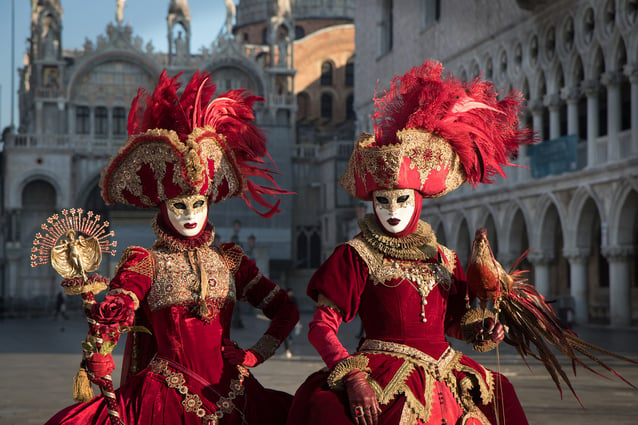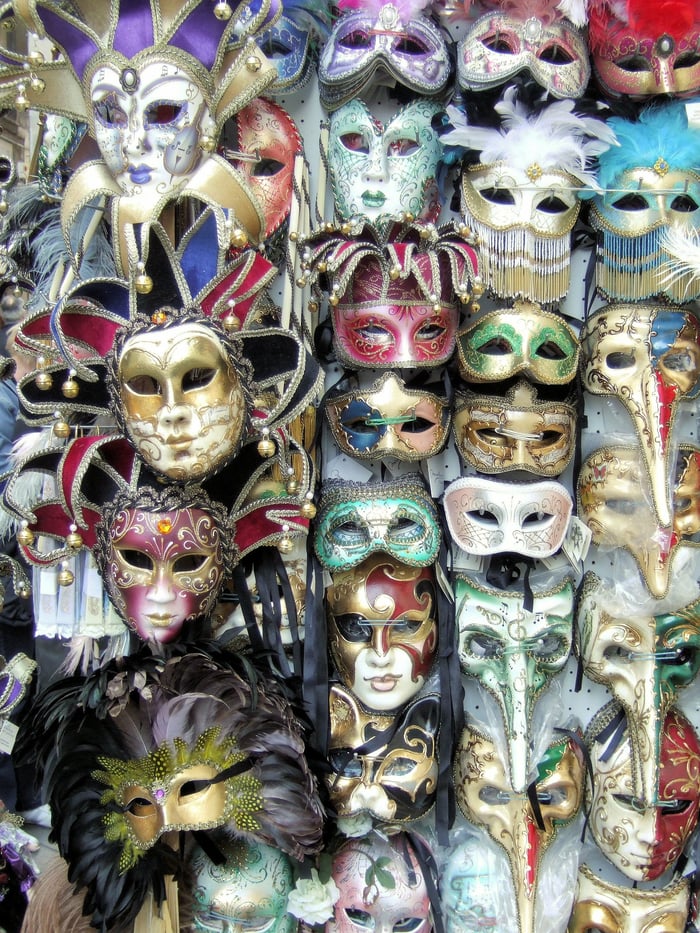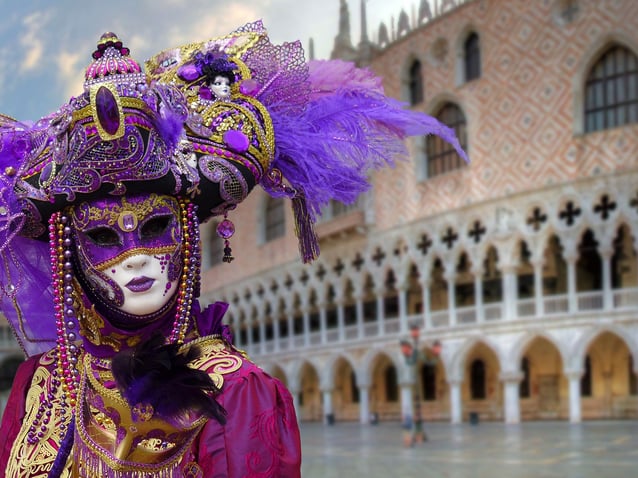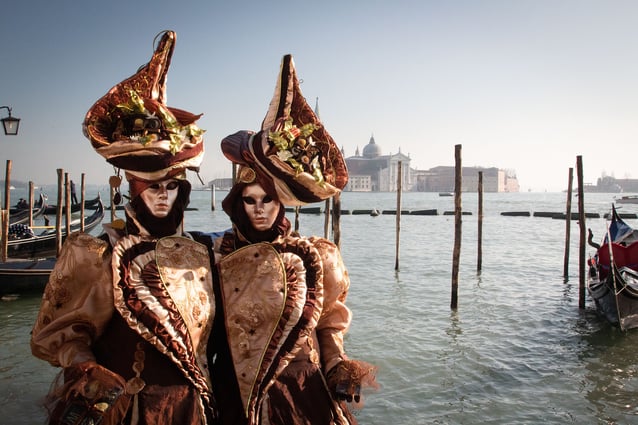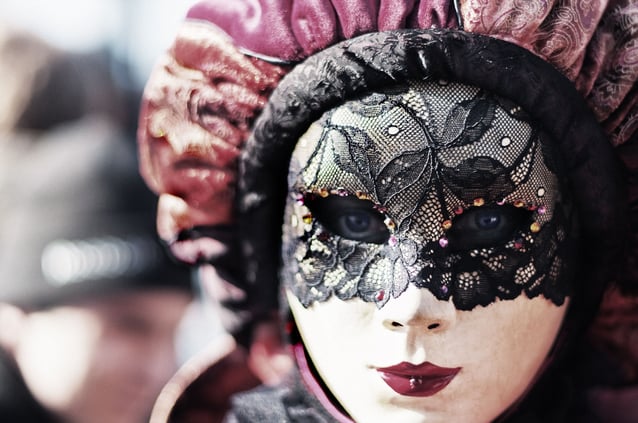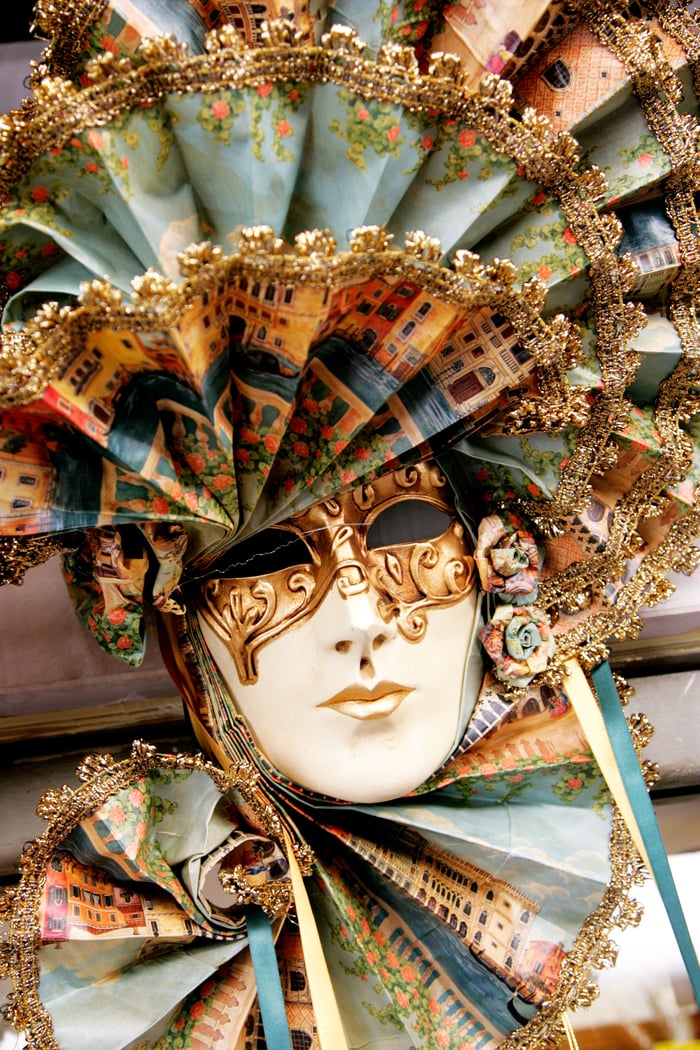When is Carnival?
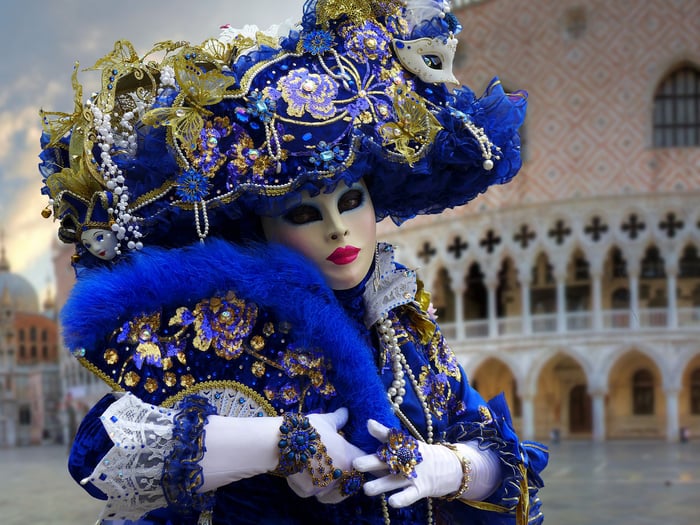
The festival begins ten days before Ash Wednesday or, as with most Carnivals, the time to feast before the Lenten fast. Unlike Carnival in Rio or Mardi Gras in New Orleans, everything happens differently. Location alone sets the tone.
Learn more about Italy Travel or Browse Italy Travel Itineraries
History of the Carnival of Venice
The original Carnival was held in 1162 to honor one of Venice's victorious battles when the city still bore the name "Repubblica della Serenissima". It took over a hundred years before city leaders proclaimed Carnival as an official event. Then it grew to its peak in the 18th century, when Venice was known as the yachting capital of Europe, featuring the likes of the famous hedonist Casanova. But the glory days of Carnival fell apart when Napoleon invaded Venice in 1797. He halted the success and activity of Carnival for nearly 200 years. It was not until 1979 that the city of Venice brought back this festival from ancient times in order to boost tourism. In fact, this little historical summary is what distinguishes this Carnival from other famous festivals such as the Carnival of Rio or Salvador, or New Orleans.
Learn more about Italy Travel or Browse Italy Travel ItinerariesCarnival Masks
To better understand Carnival, you need to understand the importance of the maschera (masks). The mask allowed citizens to behave extravagantly and show off their alter ego without fear of social consequences. This physical transformation allowed a character judgment of the person purely based on the mask and costumes rather than their role in society. Historically, Venetians were allowed to wear masks from Saint Etienne (December 26) until "Mardi Gras" (always between February 3 and March 9), although at times masks were completely banned due to the “collective madness” associated with them. The mascherari (professional mask makers) have prestigious roles in society, with statues in their honor dating back to 1436. Masks allow members of all classes of society to party together anonymously. The Italian masquerade (masked meeting) has several typical masks. The Bauta is the most common and covers the upper part of the face, nose and cheeks, while allowing the user to eat, drink and speak freely. The Bauta was used both for Carnival and in everyday life. Moretta masks originate from France. Moretta means "dark" and represents mystery, a common theme during these ten days. It is feminine and covers the face with delicate curves. The Volto (Italian for "face") or Larva (Latin for "ghost") are the simplest "ghost masks" covering the entire face in decorated white and come with a cloak. The scariest of the lot is the Medico della Peste or Plague Doctor. A long-hooked nose, which goes with a coat and white gloves. This one was thought to protect against the plague epidemic in the 17th century.
Learn more about Italy Travel or Browse Italy Travel Itineraries
Carnival Balls
If you can afford it, one of the Carnival balls will leave an unforgettable memory both in your memory and in your wallet with prices of up to 2000 euros for a single evening.
Learn more about Italy Travel or Browse Italy Travel Itineraries
Carnival Events
The most watched event is the official opening of Carnival in Piazza San Marco, which is the heart of most festivities. Don't miss "Le Vol de l'Ange", which starts at noon and pays homage to 16th century Turkish acrobats who wowed crowds with their balancing tricks. Nowadays, an “angel” flies on a steel cable above the costumed crowd and under the music of Vivaldi. The square is filled with costumed people of all colors. After the launch of the festivities, the crowd disperses into the alleys and canals to stroll on foot and by gondola.
Learn more about Italy Travel or Browse Italy Travel Itineraries
Carnival Theater and Performances
Theater is an essential part of the Carnival of Venice, from street performances to performances at the Gran Teatro in Piazza San Marco. The Grand Theater offers shows 12 hours a day with daily costume contests, musical and theatrical performances. Each year, a new theme governs the shows of the year. In 2014 it will be the theme of the fable, the forest, and the fantastic. The Teatro Goldoni, Malibran and La Fenice are classic places to see shows.
Don't miss the candlelight parade on the canals during Mardi Gras. Boats, gondolas and other boats, all lit by a candle, offer a romantic and unreal spectacle. Being a Shrove Tuesday, many revelers party properly, especially on that night.
Learn more about Italy Travel or Browse Italy Travel Itineraries
Notte de la Taranta
The 10 days of the festival come to an end during the Notte de la Taranta (night of the tarantula) when fireworks are set off, which officially marks the end of the Carnival.
Learn more about Italy Travel or Browse Italy Travel Itineraries
Ready to travel? Start planning your vacation with Keytours Vacations, your expert in personalized travel experiences.



